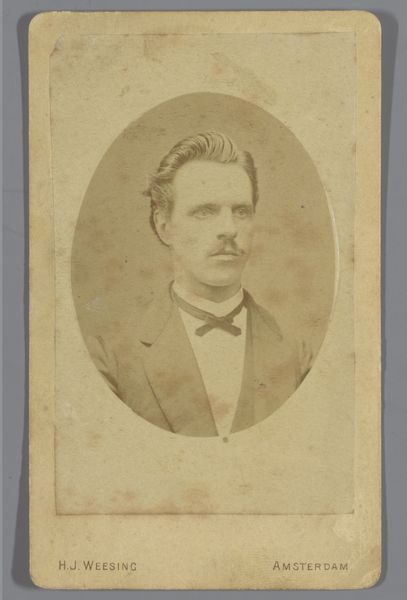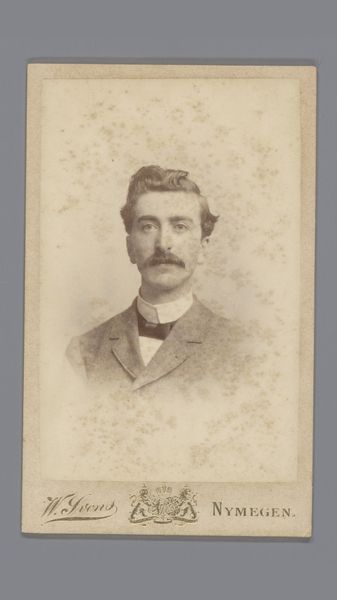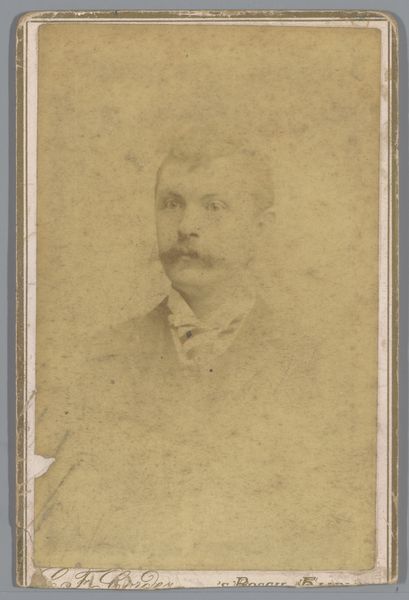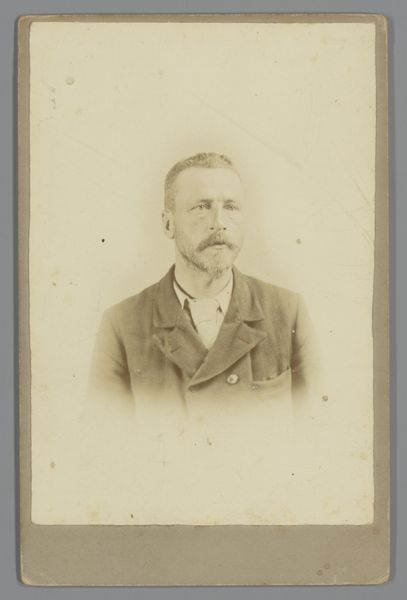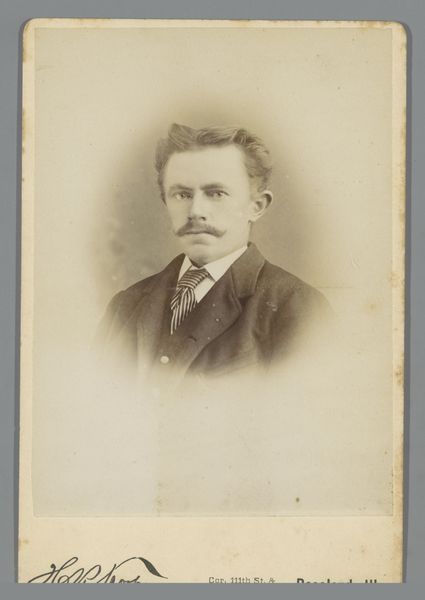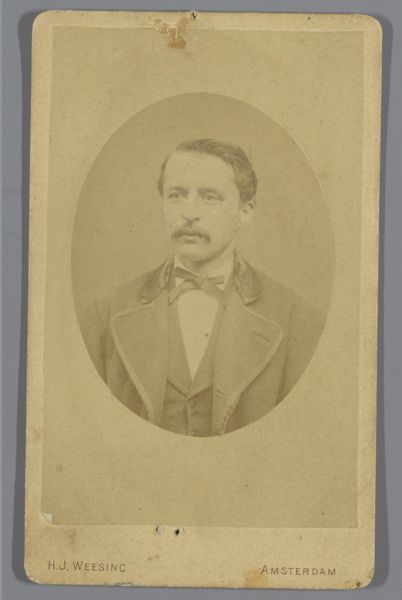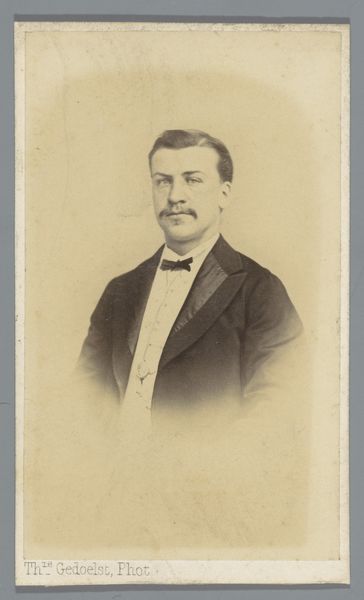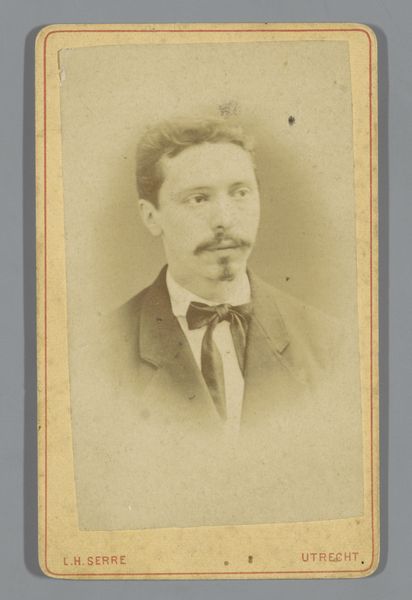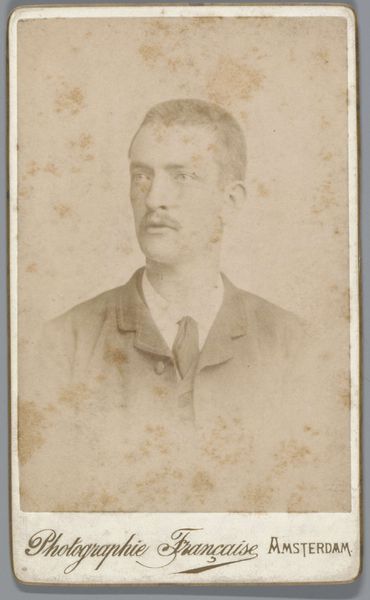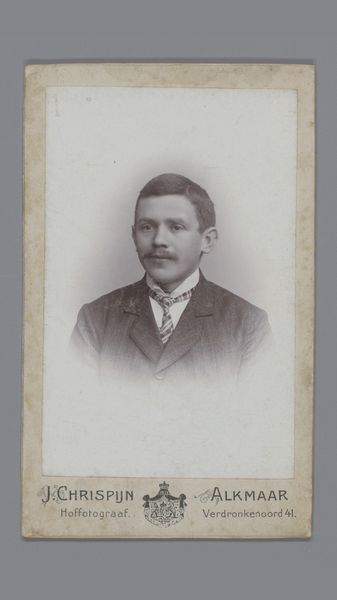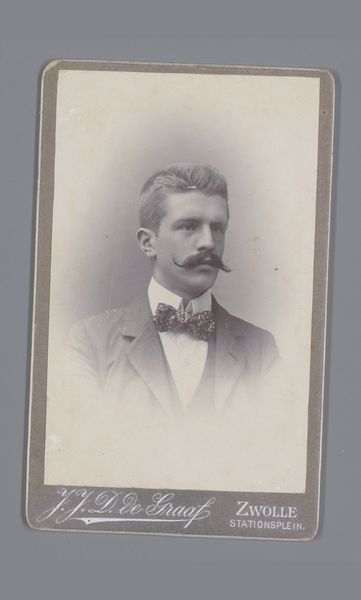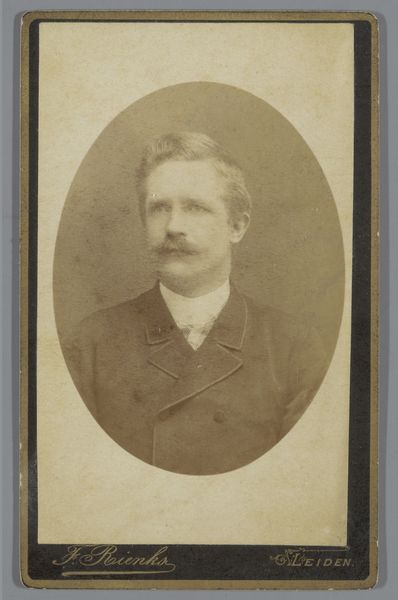
photography
#
portrait
#
african-art
#
photography
#
realism
Dimensions: height 91 mm, width 57 mm, height 104 mm, width 64 mm
Copyright: Rijks Museum: Open Domain
José Augusto da Cunha Moraes made this photograph of a man in Loanda, Angola, likely in the late 19th century. The image, typical of studio portraiture at the time, presents a man in a suit and tie, embodying the conventions of European bourgeois respectability. Angola, then a Portuguese colony, was undergoing significant social and cultural changes. Photography studios, like the one operated by Moraes, were part of a modernizing trend, catering to a diverse clientele that included European colonizers and assimilated Africans. The sitter's Western attire speaks to the complex dynamics of cultural exchange and imposition inherent in colonial contexts. Was this portrait intended to signal upward mobility, cultural assimilation, or perhaps something else? To understand the full story, one must consider the historical context of Portuguese colonialism, the role of photography in constructing racial and social identities, and the specific biographies of both the photographer and his sitter. Only then can we appreciate the multilayered meanings embedded within this seemingly straightforward image.
Comments
No comments
Be the first to comment and join the conversation on the ultimate creative platform.
